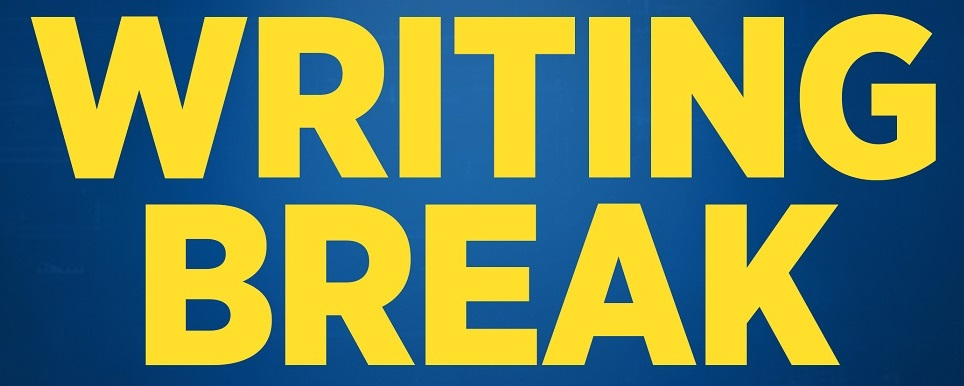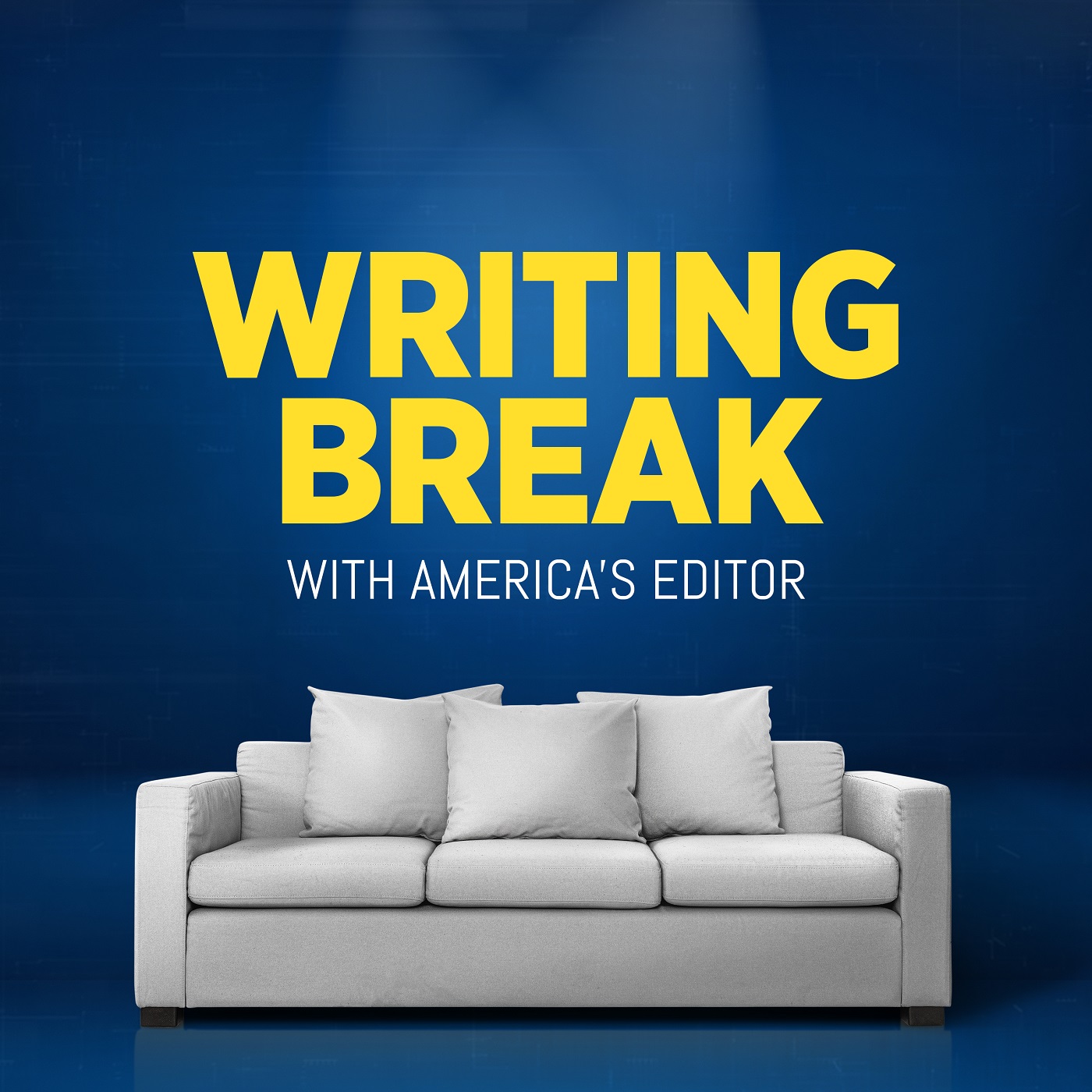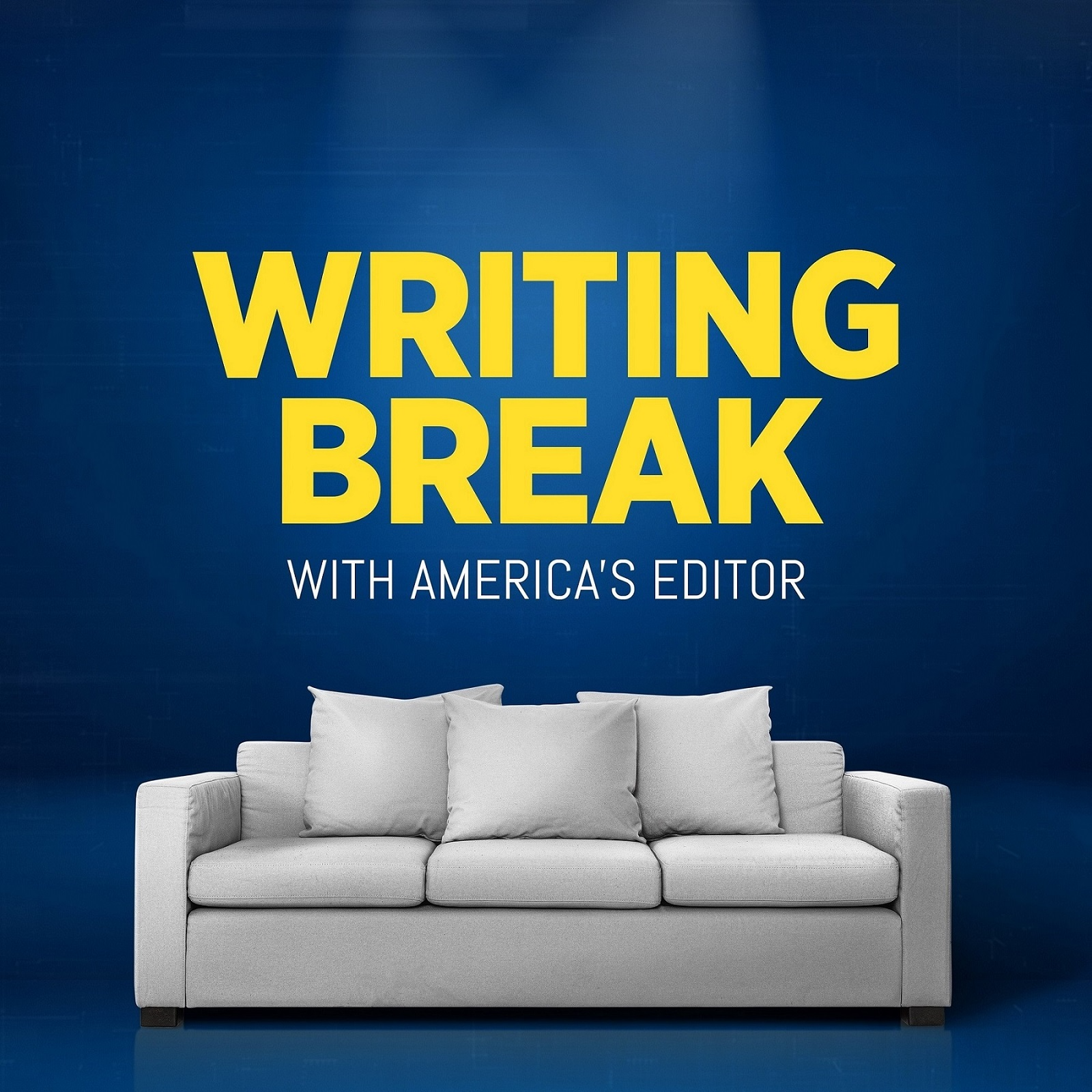Episode 134
Writing Horror: Fear, Gore, and the Monsters Within
Just in time for Halloween, this episode explores the expectations and pitfalls of writing horror and how to write fear in any genre.
🛋️
Overthinking Couch Topics:
- Fear in any genre
- The core of horror
- Tension as the backbone
- Themes and monsters
- Horror subgenres
- Global horror
- Pitfalls to avoid
Next week, we’ll leave the monsters behind and step into Literary Fiction, the genre that insists on finding truth in everyday life.
- Writing Thrillers and Suspense: Raising the Stakes - Writing Break
- These 7 Components Will Set the Perfect Pace for Your Story - Writing Break
- The Biggest Mistake Writers Make - Writing Break
- Free Style Sheet Templates
- Free Writing Tips
Music licensed from Storyblocks.
Transcript
If you have plot bunnies coming out of your plot holes, it’s time for a writing break.
If you still have a candle flickering from last week’s Gothic Fiction episode, don’t blow it out just yet. We’re moving from Gothic to Horror, where the shadows get darker, the heartbeats get faster, and the monsters get closer. For non-horror authors, we’re going to start with an overview of how to write fear into any genre.
Then we’ll enter the deep, dark forest of horror. Since this episode is releasing just before Halloween, it’s the perfect time to ask: How do we write stories that terrify our readers? How can we be sure the fear lingers with them long after the book is closed?
The Writing Break cafe is open. Let’s head inside so you can enjoy an autumnal potion of your choosing before we walk into the foggy night together.
Fear isn’t just for the horror genre. Fear belongs everywhere. Every well-developed character, no matter the genre, is afraid of something. In romance, it might be the fear of rejection. In thrillers, it might be the fear of being outsmarted. In fantasy, it might be the fear of failing a kingdom. And in literary fiction, which we’re discussing next week, it might be the fear of being forgotten.
When you write fear into your story, we see vulnerability in your characters, which deepens our connection to your characters. This is because fear is universal. We’ve all lain awake at night, dreading something we can’t quite name. We’ve all felt that spike of adrenaline when the unknown presses close. And if you haven’t done either of those things, you don’t know what you’re missing.
So, how do you write fear into your non-horror story? First, use sensory details, such as the smell of smoke, the silence that feels too heavy, or the creak of the floorboard when no one else should be home.
Then, play with pacing. It's especially effective if you can stretch out a moment and let your readers’ nerves tighten with every line they read. And, as we discussed in last week’s episode, use ambiguity. Leave room for the reader’s imagination because nothing you describe will ever be scarier than what your reader can dream up on their own. And if you don’t believe me, try reading a Dean Koontz novel. When he finally reveals the who and the why behind the terrible things happening in town, without fail, it’s always less scary than what I was imagining. Sorry, Dean.
Fear is an emotional tool. It has no genre boundary. And no matter what you write, letting your characters brush up against their deepest fears will make your story stronger.
Now, it’s time to head to the Overthinking Couch for our deep dive into horror and the people who love reading it.
Horror is the genre that exists to scare us, to make us uneasy, and to take the fears we already carry and amplify them. The best part is that this treaty of terror between author and audience is a consensual agreement. You want to scare them, and they want to be scared.
In last week’s episode, we explored the power of atmosphere in Gothic fiction with its ruined castles and impending storms. Gothic fiction gives you the suggestion that something strange is going on. Horror strips away the suggestion of the uncanny and makes you look at the thing you’re afraid of.
Horror asks, What scares us most?
For some, it’s the supernatural, like ghosts, demons, and cursed objects. For others, it’s the cosmic, the sheer terror of how small and powerless we are in an incomprehensible universe. And for many, it’s the all-too-human aspects of violence, cruelty, grief, and the loss of control.
Rising tension features in all genres. For example, a few weeks back in episode 128, we discussed thrillers and suspense, and I mentioned that the most effective thrillers balance high-speed sequences with short breathers, but the momentum is still building.
The difference with horror is that the rising tension doesn’t let go. There are no breathers.
Horror requires confrontation, and the confrontation is often the climax of the story, but there can also be a series of confrontations throughout the book, increasing in intensity as we go. By the time we get to the climax, we’ve seen the protagonist suffer so much we’re really not sure they’re going to make it out alive. These confrontations are often centered around mortality, trauma, or the unknown.
Fear is a primal emotion, and we all experience it at some point. Horror taps into deep universal fears, like death, isolation, loss of loved ones, and loss of identity. Horror also taps into circumstantial fears. For example, we might not be afraid of the dark when we are home, unless we have to go to the basement in the middle of the night.
Good horror shows us ourselves at our most terrified, our most desperate, and our most monstrous. Good horror is about the things that scare us most in the daylight. Horror makes us uneasy in a way that lingers, and that is the kind of thing that attracts horror fans.
Horror thrives on tension. Build suspense through your pacing until you take your readers past their breaking point. Even though in horror we know for sure that there is a monster, your story might still benefit from some suggestion of gore rather than detailed gore itself. Your audience might not want a blow by blow of what happened to a victim, so this is where sensory details come in. For example, rather than describing in gory detail what your protagonist sees when they stumble upon one of the monster’s victims, describing the smell of the room can add weight to your suggestions of gore. Maybe the narrator tells us that the victim’s throat was cut, and maybe even that there was blood everywhere, but the protagonist gets weak, stumbles, and even vomits at the sight. This indicates to your reader that they should imagine a super gross throat cut. Consider the audience you’re writing for, and then decide how much gore you’re going to describe in detail. Yes, there’s a place for blood and shock, but if you rely only on gore, readers numb quickly. Tension is the true backbone of horror. Horror lives in the senses, and mystery is your ally here.
Speaking of readers going numb, this also happens with predictable tropes: the cabin in the woods, the creepy doll, the jump scare. Unless you’re subverting the trope, it feels stale.
Themes are important in horror. Haunted houses often symbolize trauma, history, or unresolved guilt, and monsters can represent our dark sides. Zombies have stood for consumerism, contagion, or conformity, and vampires have represented repressed sexuality, addiction, or disease.
Horror hits harder when there is meaning beneath the scares. Take Jordan Peele’s Get Out. Yes, it’s a horror film with eerie hypnosis and violent reveals. But at its core, it’s a story about systemic racism and the commodification of Black bodies. The real horror is not the supernatural twist; it’s the society that allows it to happen.
So, what is your monster really about?
Like I said, it’s important to consider your audience and the type of horror you’re writing. Horror is a vast graveyard of subgenres, each with its own mood and monster. Here are 7 big ones:
Psychological horror: This is about fear coming from the mind, paranoia, madness, and isolation.
Supernatural horror: Ghosts, demons, cursed objects, that kind of thing
Body horror: This feeds off of the terror of the human form transforming, decaying, or betraying us.
Folk horror: Here is where you’ll find rural landscapes, ancient rituals, and cults.
Cosmic horror: which centers on our insignificance in the face of vast, uncaring universes.
Splatterpunk or extreme horror: This subgenre is devoid of nuance. Forget suggestions of gore. Graphic violence and detailed gore are central features here. It is not for the faint of heart.
YA horror: This offers scares for younger audiences, from R.L. Stine’s Goosebumps to modern, dark YA novels.
Each subgenre taps into different fears. The trick is to know your audience and choose which nightmare you want to invite them into.
Fear may be universal, but how it’s expressed changes across cultures. Looking beyond Western horror can be a goldmine of inspiration.
Japanese horror often features ghosts born of technology, curses that spread like viruses, and modern anxieties woven into folklore.
Latin American horror is rooted in colonial trauma, Catholicism, and indigenous myths.
African horror is often entwined with generational curses and oral traditions. Ritual, family, and history are inseparable from fear.
Southern Gothic bleeds into Southern Horror, where decaying plantations and family secrets mask horrors of slavery, racism, and guilt.
Notice that there is some overlap with the subgenres from last week’s Gothic fiction episode. Globally, horror shows us that fear is shaped by culture, history, and the wounds we carry collectively.
Jump scares or buckets of blood can be fun if you’re into that kind of thing. But good horror is much more than that. At its best, horror is about confronting what terrifies us most and, sometimes, surviving it.
It asks us to look directly at grief, loss, cruelty, and chaos, and then to ask: what does it mean to be human in the face of fear?
That’s why horror endures. And that’s why, especially around Halloween, we return to it. It’s cathartic. It’s unsettling. And it reminds us that courage isn’t the absence of fear but what you do when you’re terrified.
This week’s overthinking prompt is simple but chilling.
Imagine a completely ordinary place. Now imagine what would make that place horrifying, not through gore but through atmosphere or revelation.
What ordinary thing in that place becomes terrifying?
Maybe the fluorescent lights in a grocery store suddenly cut out. An empty swing on the playground is moving, even though there’s no wind. Or a washing machine in a laundromat starts running with no one around to start it, and something is tapping against the glass.
Don’t write the monster. Write the unease. Let the atmosphere do the work.
For some great advice on pacing, and a Halloween episode with a real-life ghost story, check out episode 39, which is called, “These 7 Components Will Set the Perfect Pace for Your Story.” I will link it in the show notes.
Next time, we’ll move away from monsters and into Literary Fiction, the genre that finds truth in everyday life.
Until then, thank you so much for listening, and remember, you deserved this break.
Thank you for making space in your mind for The Muse today.
Writing Break is hosted by America’s Editor and produced by Allon Media with technical direction by Gus Aviles. Visit us at writingbreak.com or contact us at podcast@writingbreak.com.



